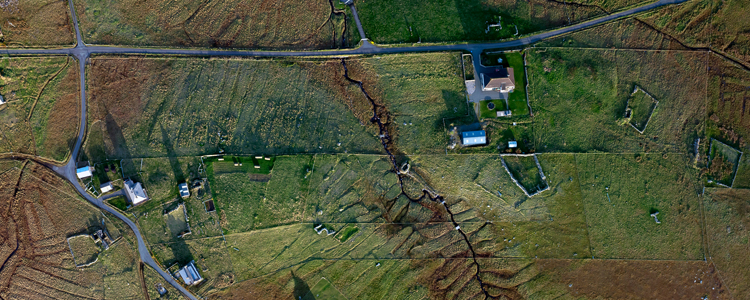
This page is here to give you some background to the Environment connecting theme and to outline how you might implement the Environment outcomes in your work and organisation.
You can also find out more about our work towards a Climate Emergency and Sustainability Plan, and recent climate-related activities we've supported, in the following pages.
We are committed to operating in an environmentally sustainable manner and will work to ensure that individuals and organisations that we support do the same. In 2012 we developed and published our Environment Policy, to guide all of our work.
On one relatively simple level, this involves reducing our impacts on the environment, including our carbon emissions (a legal requirement), resource use and waste streams; many of these are measurable, depending on circumstances. On a more complex level, it can involve influencing others, be they audiences, suppliers, other cultural organisations, networks and creative practitioners, or local communities and businesses.
Like most activities, the arts, screen and creative industries have an impact on the environment, but we recognise that the environmental challenges facing arts, screen and creative industries are diverse and complex, reflecting the wide spectrum of activities undertaken.
There are now legal requirements concerning carbon emissions: the Climate Change (Scotland) Act (2009) requires all public bodies, including Creative Scotland, to work to deliver the aims of the Act and help reduce Scotland’s carbon emissions. We are therefore required to report our emissions annually.
We aim to see the arts, screen and creative industries show leadership in reducing their environmental impacts and carbon footprint and have sustainable behaviours embedded in their organisations and their work, with the additional cost reductions that this can often bring.
Other environmental impacts besides carbon emissions are also important. Some aspects of resource use and waste streams can be measured in terms of their equivalent carbon emissions, others can nonetheless be monitored and reduced.
The arts, screen and creative industries influence the wider public through their communication of ideas, emotions and values. Indeed, this influence is seen by many as the unique and distinctive contribution that these sectors make to addressing the troubling environmental changes taking place, and the risks we face.
We are keen, then, to see how the arts, screen and creative industries use their influence, through the work they produce and present, through the way in which they operate and through their communication with their audiences, networks, and partners.
Measuring and reporting carbon emissions and other environmental impacts is the essential first step to reducing them. With support from Creative Scotland, Creative Carbon Scotland has developed a framework to facilitate reporting, to provide a standard across the sector, useful to organisations in reducing their carbon emissions and compliant with other organisations seeking information such as local authorities, British and International Standards.
These questions can help with environmental planning:
Creative Carbon Scotland provides free training and support for organisations receiving regular funding from Creative Scotland. Useful tools which help benchmark against similar organisations are available free via Creative Carbon Scotland’s Green Arts Portal (GAP). The GAP also provides ideas and resources to help arts, screen and creative industry organisations reduce carbon emissions.
Julie’s Bicycle provides a number of practical guides for different sectors in the arts and creative industries.